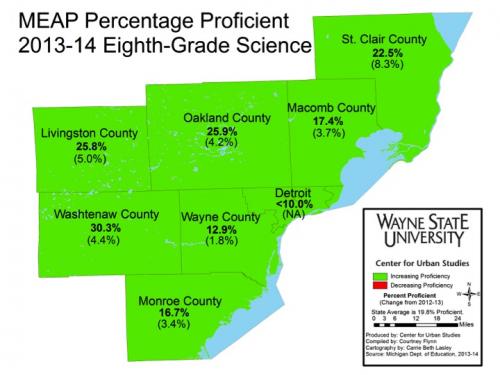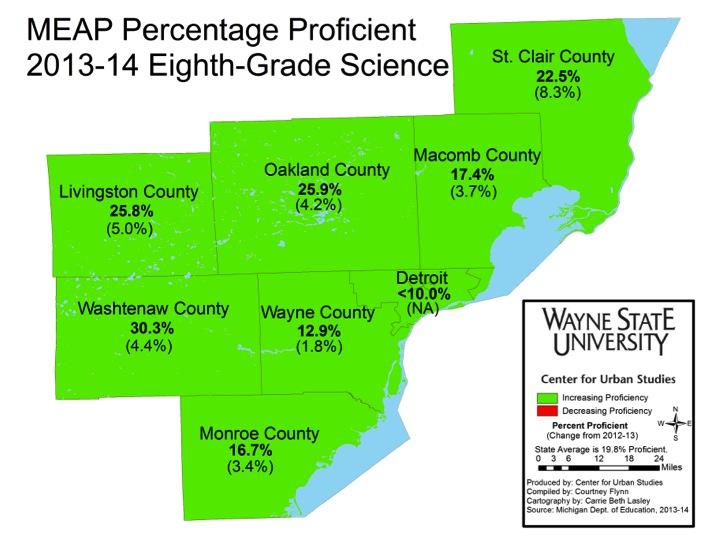Last week, we examined the MEAP scores for students in grades three through five in the intermediate school districts located within the seven-county region as well as the Detroit Public Schools. This week, we will examine the MEAP scores for students grades six through nine within the same region. As our earlier post showed, progress for students in grades three through five was slow. This week’s post, however, shows more promising results, with the exception of seventh-grade reading and sixth- and ninth-grade social studies.
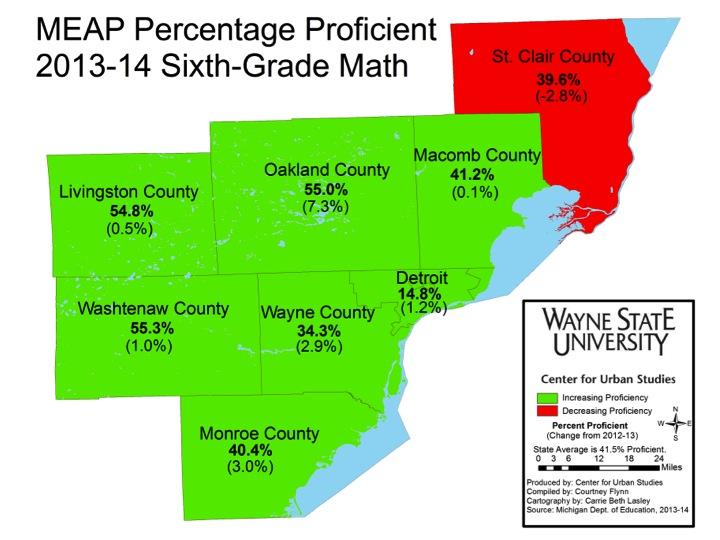
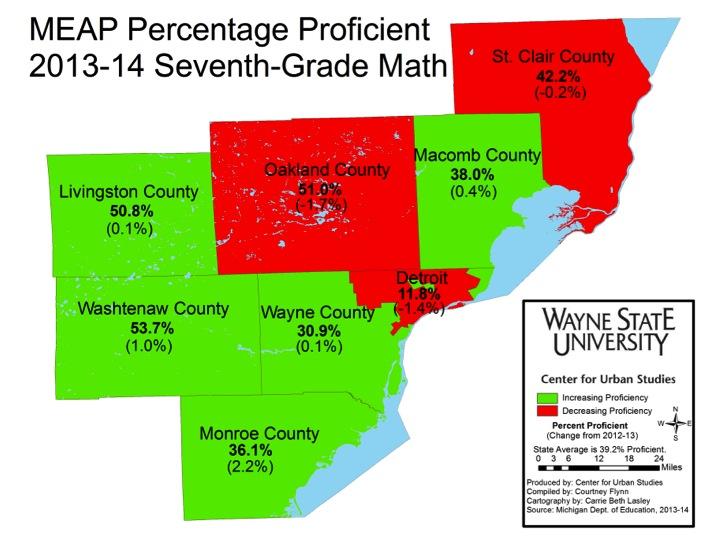
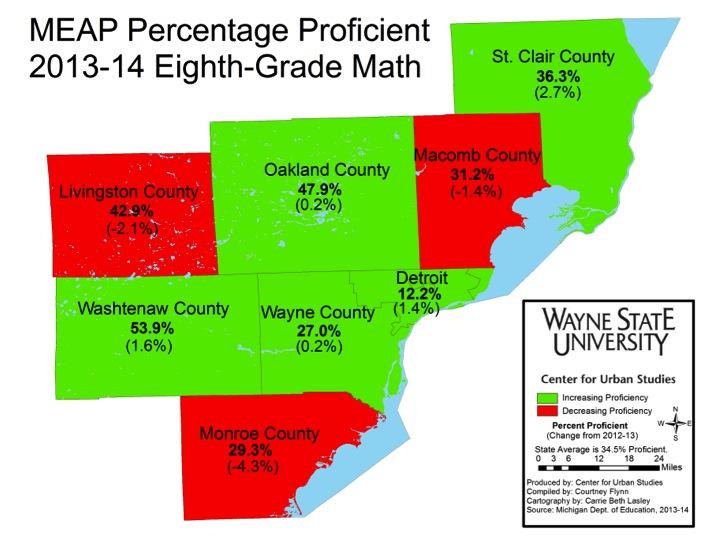
In St. Clair County, the St. Clair Regional Education Service Agency (RESA) experienced a decrease in MEAP math scores for sixth- and seventh-grade students from fall 2012 to fall 2013. For the sixth-graders, there was a 2.8 decrease in the percent of students proficient in math, and for the seventh-graders, it was a 0.2 percent decrease.
Overall in the region, the percent of students proficient in math increased the most among sixth-graders. The Oakland ISD had both the highest percent of sixth-graders proficient in math (55%) and the highest percent increase of sixth-graders proficient in math (7.3%). Washtenaw County had the highest percent of seventh- and eighth-graders proficient in math (53.7 and 53.9%, respectively) while Detroit Public Schools had the lowest percent proficient across all three grade levels (6th: 14.8%, 7th: 11.8%, 8th: 12.2%).
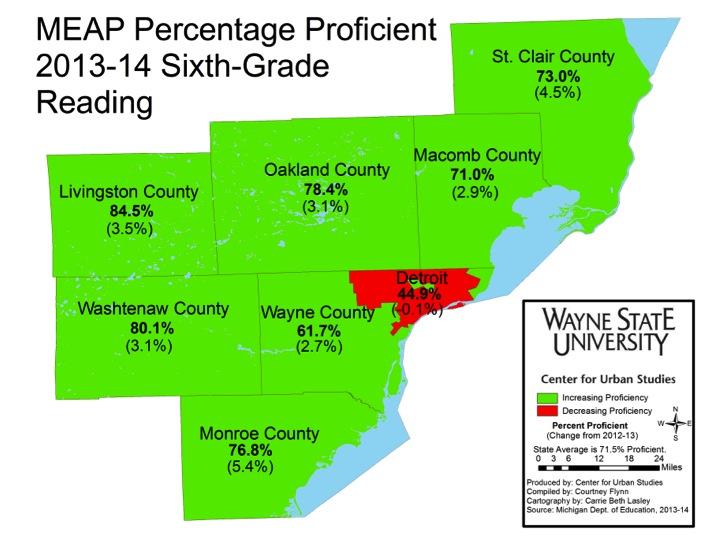
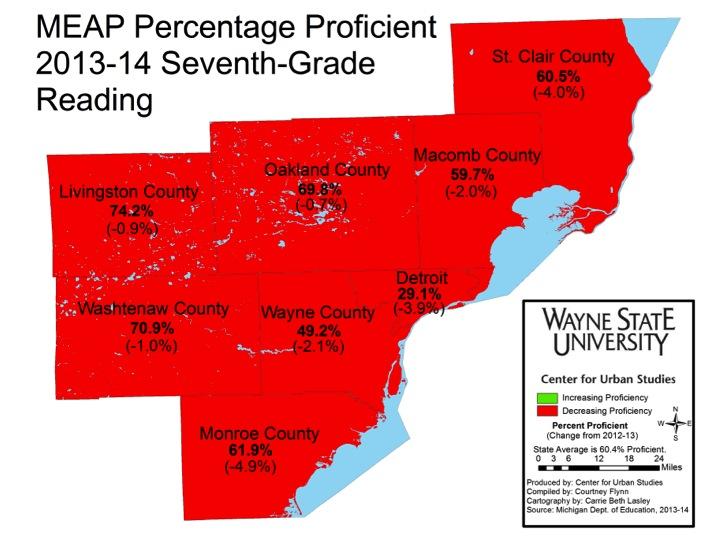
The eighth-grade map is currently not available; please check back soon.
As can be seen by one of the maps above, seventh-graders across the seven-county region struggled to increase their reading proficiency as not one ISD or DPS experienced an increase in the percent of proficient students. The Monroe ISD experienced the largest decrease among seventh-graders from fall 2012 to fall 2013 at 4.9 percent. It was DPS, though, that had the lowest percent of students proficient in seventh grade reading, 29.1 percent. Even though there were decreases in proficiency across the region, some ISDs, like Livingston and Washtenaw, did have more than 70 percent of their students prove to be proficient on the test (74.2 and 70.9 percent, respectively).
Except for Wayne County and DPS, all the other ISDs in the region had more than 70 percent of their sixth- and eighth-graders test as proficient in reading, and post an increase from the prior year. For the sixth grade, the Livingston ISD had the highest percent of students proficient in reading (84.5%) while the Monroe ISD had the highest increase from the year prior (5.4%). For the eighth-graders, the Washtenaw ISD (82.8%) had the highest percent of students proficient in reading while the St. Clair RESA (8.3%) had the largest increase.
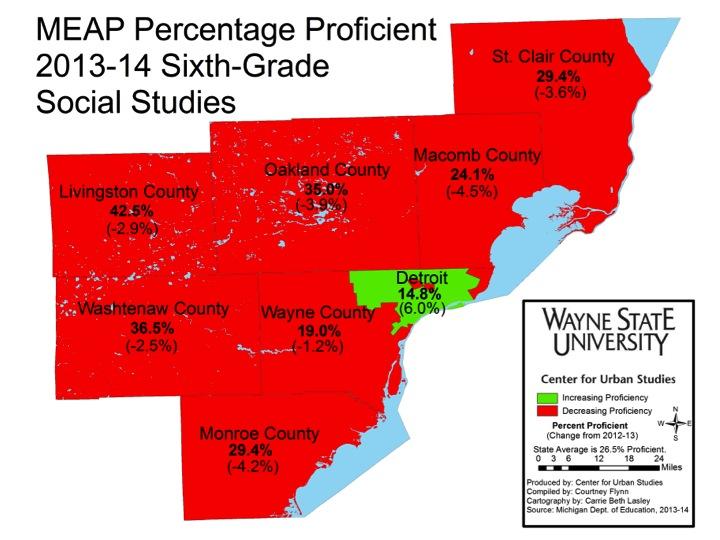
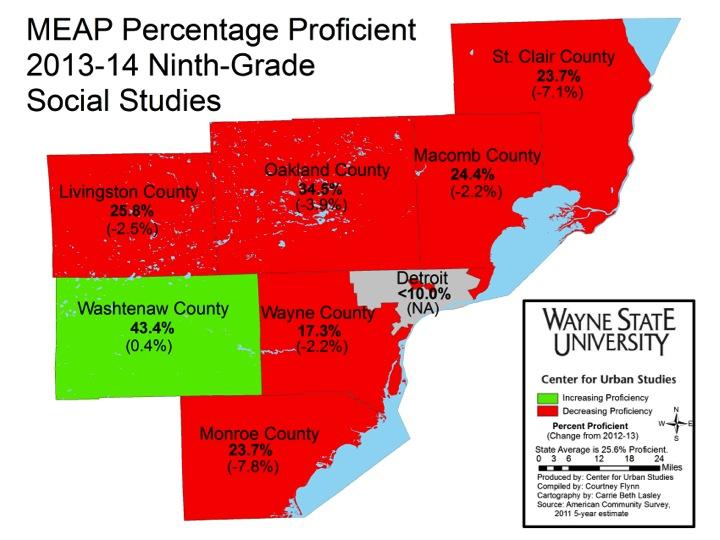
As the maps show, only one ISD and DPS posted an increase in the percent of students proficient in social studies from fall 2012 to fall 2013. For the sixth-graders, DPS had a 6 percent increase in the percent of students proficient in social studies. However, DPS still had the lowest percent of students proficient, 14.8 percent. The Livingston ISD (42.5%) had the highest percent of sixth-graders proficient in social studies and the Macomb ISD (4.5%) experienced the largest decrease.
For the ninth-grade social studies MEAP exam, only the Washtenaw ISD experienced an increase in the percent of students proficient (0.4 percent); it also had the highest percent of students proficient (43.4%). The Monroe ISD experienced the largest decrease from fall 2012 to fall 2013 (7.8%), though it should be noted that the specific numbers for DPS could not be reported, according to the Michigan Department of Education, because less than 10 percent of students in the ninth grade were proficient on their social studies MEAP exam.
All ISDs and DPS in the region showed an increase in the percent of students proficient on the eighth-grade science test. The St. Clair RESA had the highest percent increase from fall 2012 to fall 2013 (8.3%) and Washtenaw ISD had the highest percent of eighth-graders proficient (30.3%). DPS had fewer than 10 percent of its eight-graders test proficient on the science exam last fall.
